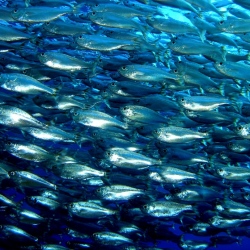
Research looking at the effects of Pacific Ocean cycles has been gradually piecing together the puzzle explaining why the rise of global surface temperatures has slowed over the past 10 to 15 years.
A new study adds yet another piece to the puzzle by examining the influence of Pacific trade winds.
While the rate of surface temperature warming has slowed in recent years, several studies have shown that the warming of the planet as a whole has not. This suggests that the slowed surface warming is not due as much to external factors like decreased solar activity or more pollutants in the atmosphere blocking sunlight, but more due to internal factors shifting the heat into the oceans.
In particular, the rate at which the deep oceans have warmed over the past 10 to 15 years is unprecedented in the past half century.
Research led by Masahiro Watanabe of the Japanese Atmosphere and Ocean Research Institute suggests this is mainly due to more efficient transfer of heat to the deep oceans. Consistent with model simulations led by Gerald Meehl, Watanabe finds that we sometimes expect "hiatus decades" to occur, when surface air temperatures don’t warm because more heat is transferred to the deep ocean layers.
A paper published last year by Yu Kosaka and Shang-Ping Xie from the Scripps Institution of Oceanography found that accounting for the changes in Pacific Ocean surface temperatures allowed their model to reproduce the slowed global surface warming over the past 10 to 15 years. However, the mechanism causing these Pacific Ocean changes has remained elusive.
